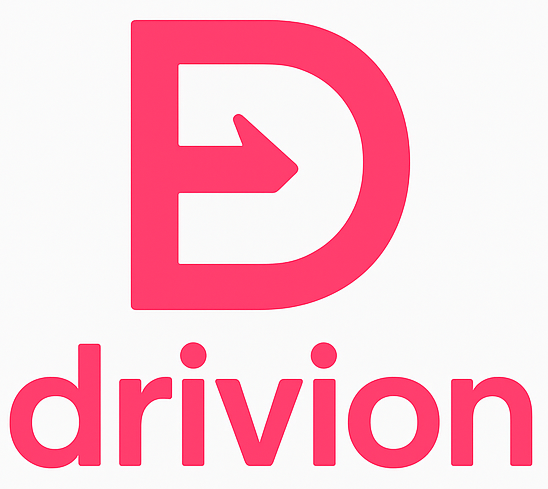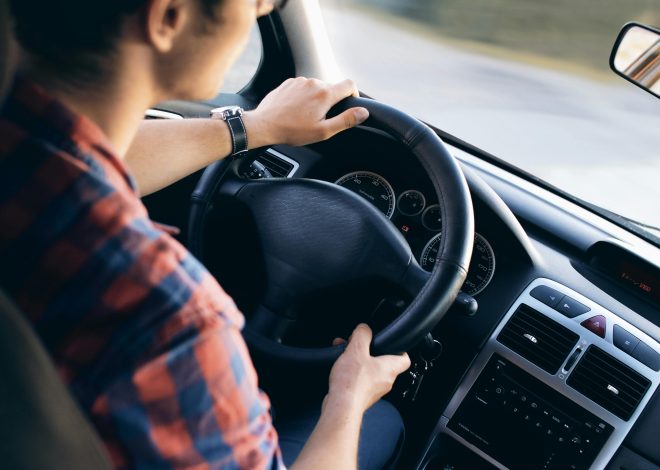
How to Recognize and Prevent Driver Fatigue
Introduction
Every year, driver fatigue contributes to thousands of road accidents worldwide. When you’re behind the wheel, even a momentary lapse in attention can have devastating consequences—for you, your passengers, and other road users. Unlike alcohol impairment, tiredness can sneak up on you without warning, making it hard to judge just how impaired you are. In this comprehensive guide, we’ll explore the science and psychology behind fatigue, show you how to spot the early warning signs, and share proven strategies—both before and during your trip—to stay alert and safe. Whether you’re planning a long road trip or simply commuting to work, these tips will help you build a personalized fatigue-management plan that keeps you awake, aware, and in control.

The Dangers of Driver Fatigue
Fatigue impairs driving in ways that closely resemble alcohol intoxication:
- Slowed Reaction Times: You process hazards more slowly, increasing stopping distance.
- Impaired Judgment: Fatigue reduces risk assessment, making you more likely to take dangerous maneuvers.
- Microsleeps: Brief, involuntary dozes lasting a few seconds—enough time to drift out of your lane or miss a brake light.
- Memory Lapses: You may forget the last few miles traveled, missing exits or turns.
Real-Life Example: A 2017 national survey found that drivers who had slept fewer than five hours were twice as likely to be involved in a crash as those with more than seven hours of sleep.
Recognizing the Signs of Fatigue
Physical Indicators
- Heavy Eyelids & Blinking: Constant blinking or difficulty keeping eyes open.
- Yawning Repeatedly: Yawns are an involuntary attempt by your body to increase oxygen flow when tired.
- Head Nodding: Brief head dips as you fight sleep.
Behavioral Clues
- Lane Drifting: You find yourself drifting toward the shoulder or into the next lane.
- Inconsistent Speed: Unintentionally speeding up and slowing down.
- Missing Road Signs: Skipping familiar exits, signs, or traffic signals.
Cognitive & Emotional Signals
- “Zoning Out”: Moments where you realize you can’t recall the last few minutes of driving.
- Irritability or Restlessness: Small annoyances feel magnified when you’re tired.
- Time Distortion: You believe you’ve driven fewer miles or minutes than you actually have.
Analogy: Think of your brain as a smartphone battery. When it drops below 20%, performance slows, apps crash, and you need a recharge—or risk shutting down entirely.
Planning Ahead to Prevent Fatigue
Prioritize Quality Sleep
- Aim for 7–9 Hours Per Night: Consistency is key—keep bedtime and wake-up times within the same one-hour window, even on weekends.
- Create a Sleep-Friendly Environment: Cool temperature, blackout curtains, and no screens 30 minutes before bed.

Schedule Your Trip Strategically
- Avoid Peak Sleepiness Windows: The early-morning hours (midnight–6 AM) and mid-afternoon (2–4 PM) are when your circadian rhythm dips naturally.
- Break Long Drives into Segments: Plan stops every 100–150 miles or every two hours.
Build in Rest Opportunities
- Power Naps: A 15–20-minute nap can substantially boost alertness.
- Pre-Trip Rest: If you know you’ll be driving late, consider napping in the late afternoon beforehand.
On-the-Road Strategies
Optimize Your Cabin Environment
- Keep It Cool: Temperatures around 68–72 °F help you stay alert.
- Fresh Air: Open a window or use vent settings to increase circulation.
- Stimulating Audio: Upbeat music, podcasts, or talk radio can engage your mind—avoid overly soothing playlists.
Hydration and Smart Snacking
- Drink Water Regularly: Dehydration contributes to fatigue and headaches.
- Choose Protein-Rich Snacks: Nuts, cheese sticks, and yogurt keep blood sugar steady—steer clear of heavy meals and sugary treats that cause energy crashes.
Caffeine—Use Thoughtfully
- Timing Matters: Drink a cup of coffee or tea at the first sign of drowsiness.
- Combine with a Nap: Known as a “coffee nap,” consume caffeine then nap for 15–20 minutes; caffeine kicks in just as you wake.
Leveraging Technology and Support
In-Vehicle Safety Systems
- Lane-Departure Warnings: Alerts when you unintentionally drift lanes.
- Driver-Monitoring Cameras: Some newer cars detect eye closure or head position.
- Adaptive Cruise Control: Maintains steady speed and safe following distance—but never replace active attention.
Smartphone Apps & Wearables
- Drowsiness Detectors: Apps that monitor blink rate or steering patterns (e.g., ‘DriveSafe.ly’, ‘AntiSleepPilot’).
- Break Reminders: Timed alerts to pull over for stretching and fresh air.

The Buddy System
- Alternate Drivers: Switch every two hours on long trips to share the load.
- Interactive Conversation: Engaging chat helps stave off boredom—just ensure your passenger isn’t too distracting.
High-Risk Situations and Special Considerations
Night Driving
- Circadian Low Points: Between midnight–6 AM, your body fights strong sleep signals.
- Visibility Challenges: Darkness increases mental load; combine with fatigue, and the risk multiplies.
Monotonous Routes
- Highways & Desert Roads: Lack of turns or scenery magnifies boredom.
- Countermeasure: Use varied audio, or stop for a brisk 10-minute walk at a scenic overlook.
Shift Work & Irregular Schedules
- Shift Work Disorder: Altered sleep patterns can cause chronic fatigue.
- Recommendation: If you drive for work with rotating shifts, use blackout curtains and white-noise machines to maximize daytime sleep quality.
Medications and Alcohol
- Over-the-Counter Drugs: Some antihistamines, cold medicines, and prescription drugs list drowsiness as a side effect.
- “Buzzed Driving”: Even below legal limits, alcohol impairs alertness. Treat any amount of alcohol as a factor in fatigue.
Creating a Personal Fatigue-Management Plan
- Self-Assessment: Track your sleep hours and rate your alertness on a scale of 1–10 for a week.
- Set Thresholds: Decide in advance that if your alertness rating falls below, say, 4, you’ll take a nap or switch drivers.
- Pack a Fatigue Kit:
- Reusable water bottle
- High-protein snacks
- Travel mug for hot drinks
- Eye mask and small pillow for quick naps
- Monitor & Adapt: Use your car’s tracking or a mobile app to log stops and note what strategies boosted your alertness most.
- Review Before Each Trip: Consult your plan, check sleep logs, and confirm you’re above your personal thresholds.

Conclusion
Driver fatigue is a hidden hazard—silent, gradual, and deadly. By understanding the warning signs, planning your sleep and breaks, optimizing your driving environment, and leveraging modern tools, you can substantially reduce your risk of a fatigue-related crash. Treat your alertness as an essential part of vehicle maintenance: recharge before you depart, top up with short breaks and power naps, and monitor your “battery level” throughout the journey. With a proactive fatigue-management plan in place, every trip becomes not just a drive, but a safe journey.



